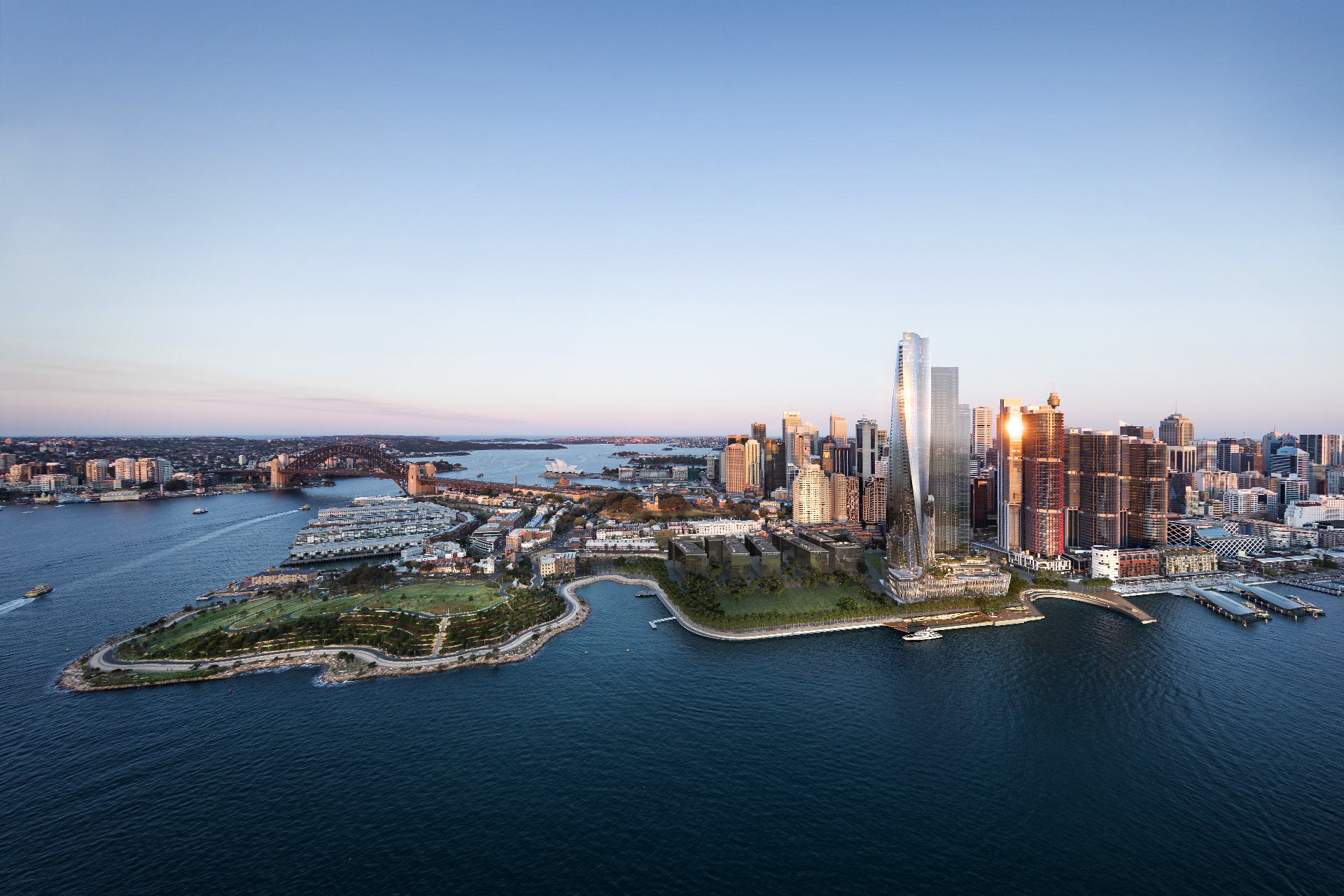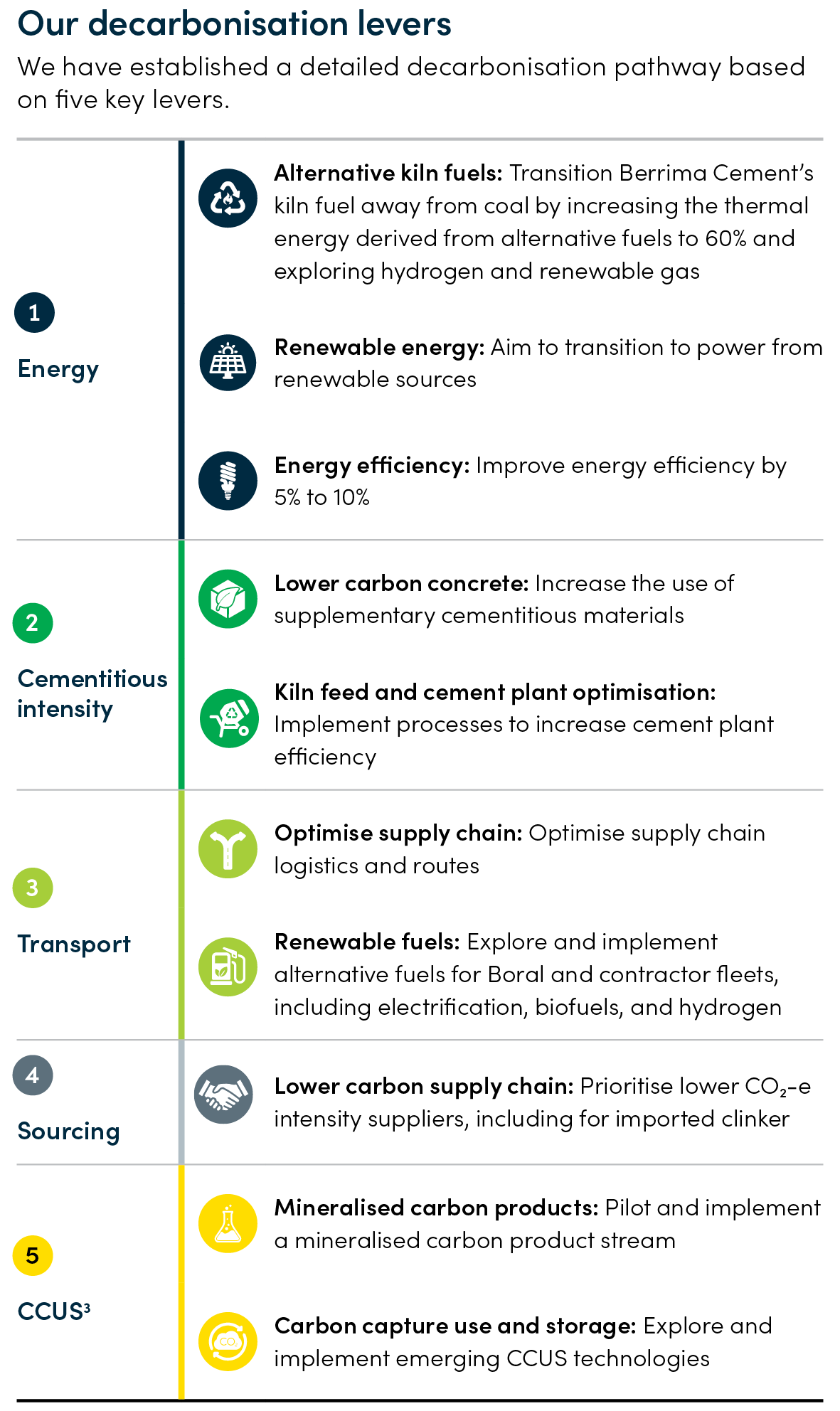1. Based on construction materials, including cement, companies taking action through the Science Based Targets initiative (SBTi).
2. While SBTi’s methodology permits use of carbon offsets to achieve net-zero emissions post 2030, our decarbonisation pathway post-2030 is prioritising achieving actual operational emissions reductions for Scope 1,2, and 3. We are exploring the use of offsets for the latter part of our decarbonisation journey and to continue to support customer net zero objectives for products that we supply.
3. Aligned with SBTi rules we have an allowance for a 5% exclusion from the FY2019 baseline for Scope 1 and 2 emissions combined, justified by a proportion of our cement clinker being sold to external parties. Whilst this graphic shows an even downward trajectory each year between targets, the decarbonisation achieved annually may be greater or lesser than the glide-path shown, depending on timing of initiatives and availability of cost-effective technology.
4. Aligned with SBTi rules and Scope 3 physical intensity target methodology, we have an allowance for a 32% exclusion from the FY2019 baseline for Scope 3. This is justified by excluding selected categories of Scope 3 emissions, or activities within these categories, where we have less capacity to influence or change the emissions intensity of that activity.
5. Cementitious materials produced is defined following the Global Cement and Concrete Association definition: Total clinker produced for cement production or direct clinker sale plus mineral components and all clinker substitutes consumed for blending, plus all cement substitutes.
6. Estimated contribution is contingent on cost effective and available technologies.


